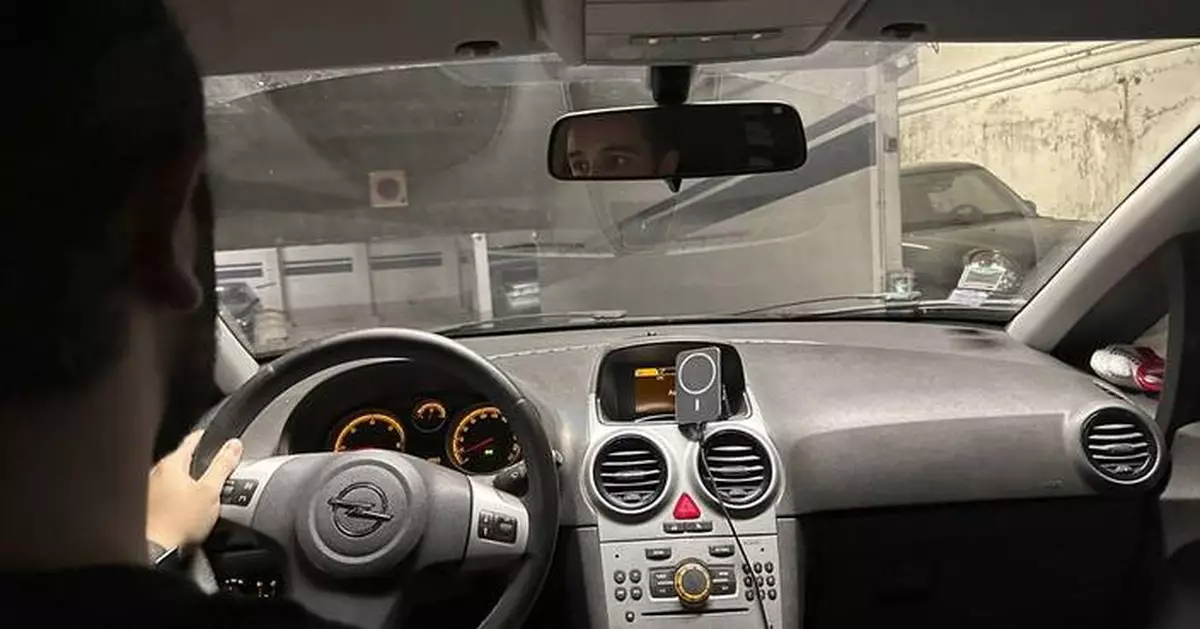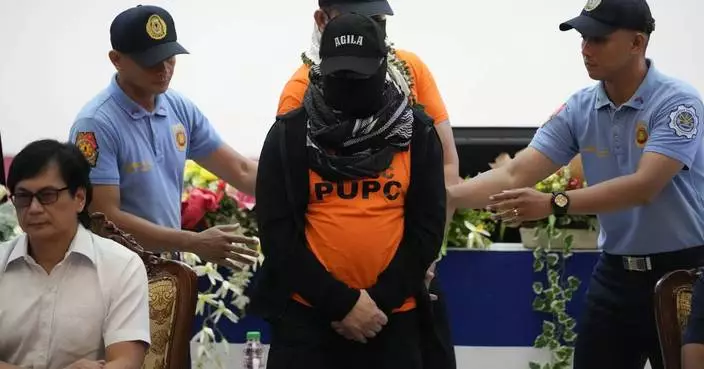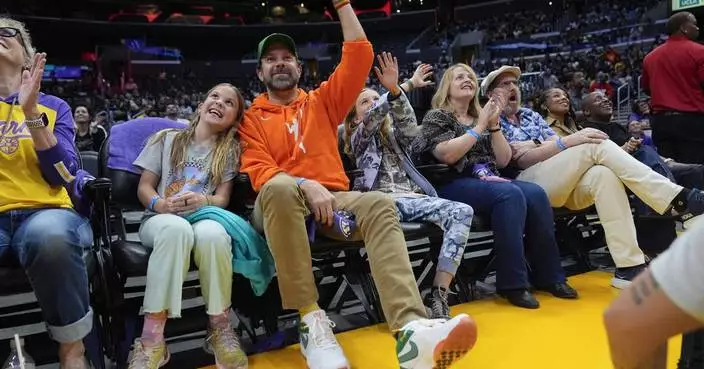PARIS (AP) — French authorities are making wide use of discretionary anti-terror powers to keep hundreds of people they deem to be potential security threats away from the Paris Olympics.
Minorities — largely with backgrounds in former French colonies — are often among those forbidden from leaving their neighborhoods and required to report daily to police, their lawyers say.
French Interior Minister Gerald Darmanin says the restrictions aim to prevent “very dangerous” people from attacking the Games.
Here are some of the key findings by the Associated Press:
Darmanin says he applied the movement restrictions and daily police check-ins to more than 500 people this year as part of France’s security buildup for the Games. The use of the powers appears unprecedented in scope. In contrast, the restrictions were imposed on 205 people in the first 26 months after France's parliament passed anti-terror legislation authorizing such powers in 2017.
AP spoke to six lawyers for about 20 people whose movements have been restricted. Those affected during the Games include Amine, an apprentice bank worker and student now forbidden from leaving his suburb south of Paris — except to report at 6:30 p.m. daily to police. The 21-year-old French national whose father was born in Morocco has no criminal record and has not been charged with any crime, he and his lawyer say.
Amine believes French intelligence services mistook him for someone else who posted decapitation images and threats against LGBTQ+ people on a video-sharing app. AP is not identifying Amine by his full name because he fears potential employers and schools may reject him if they learn police flagged him as a threat.
“I am not dangerous for France. I am not a terrorist. I am just a student who works to finance his studies,” Amine said.
Police have visited him twice in the last four months, seizing his phone and computer in one instance, which made boning up for his exams harder, he said.
“If my name was Brian, if I was blond and blue-eyed, the situation would have been different. Except that it is not the case. I am a North African Muslim, and I’ve been targeted in France," Amine said.
Interior Ministry notes seen by AP say security services foiled several alleged terror plots ahead of the Games, with Olympic soccer matches, an LGBTQ+ night club and France’s Jewish community among suspected targets. The ministry’s notes say the Israel-Hamas war has heightened the terror risk in France.
The Olympic host city was hit by Al-Qaida and Islamic State gunmen and suicide bombers who killed 147 people in attacks in 2015.
Darmanin says he applied the restrictions to people with “possible” extremist links who served jail time and others who weren’t sentenced but “represent a danger for us."
“What would the French people say, what would the world say, if people who we can suspect might carry out actions, who are radicalized, are left perfectly free and then commit attacks?” he asked last week.
Yes. Some of the lawyers AP spoke to said they understand the measures’ use for Olympic security but others say they're applied too broadly.
Paris attorney Margot Pugliese described the powers as “really the total failure of the rule of law” because they can only be contested in court after they have been applied.
Of the lawyers AP spoke to, about half of their clients have immigrant backgrounds, mostly with family roots in North Africa.
Darmanin says minorities aren’t being singled out. People suspected of left- or right-wing extremism are under surveillance, too, he said.
Paris attorney Antoine Ory represented three people who have been affected — two of them with no criminal records. One was born in Madagascar; the other two are French Algerian and French Moroccan dual nationals.
“It’s extremely abusive,” he said. “Two weeks before the Games, they come along and say, ‘You’re dangerous.‘”
A week before the July 26 Olympic opening ceremony, Ory successfully overturned the restrictions for his Madagascar-born client. A court ruled that the Interior Ministry failed to prove that the man is a terror risk and ordered the state to pay him 1,500 euros ($1,600).
AP video journalists Ahmed Hatem, Alex Turnbull and Jeffrey Schaeffer and Special Projects and Operations manager Thomas Rowley contributed.
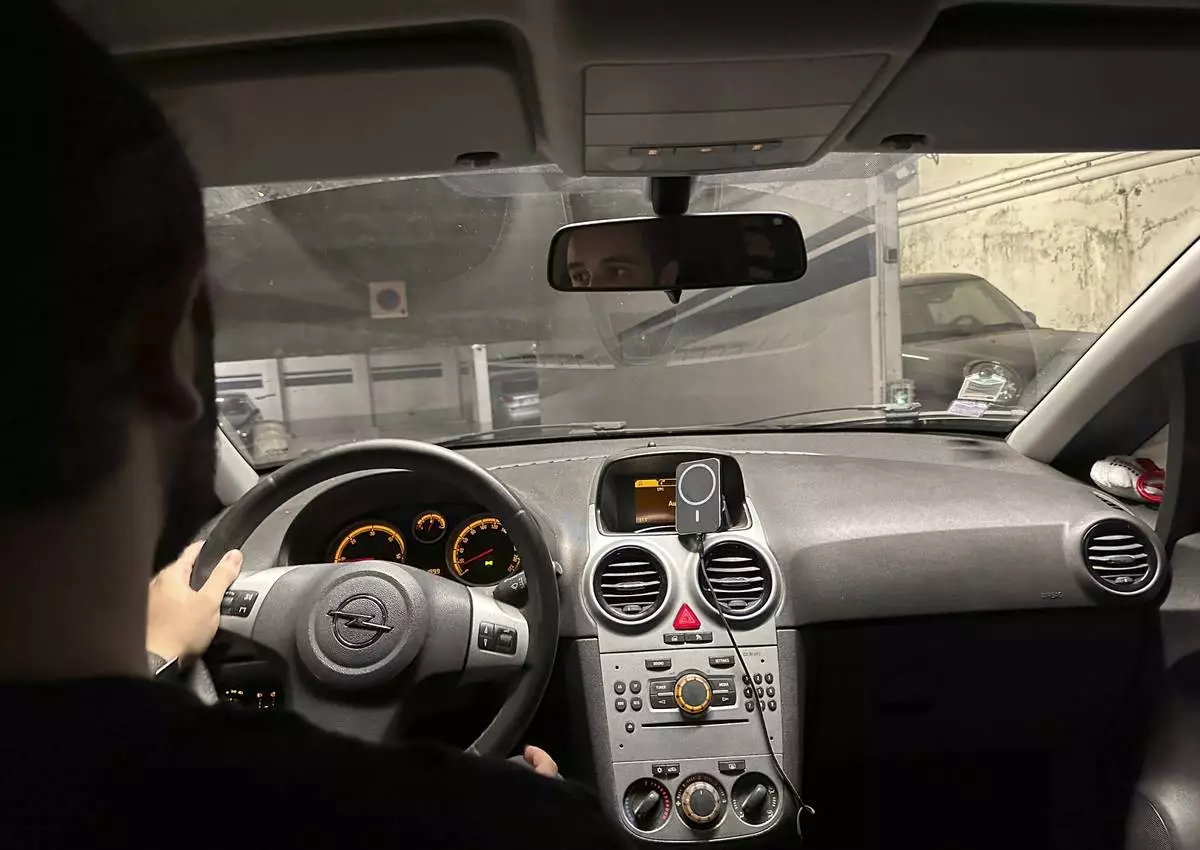
Amine, a 21-year-old student and apprentice bank worker, drives to a police station for his daily 6:30 p.m. obligatory check-in, Tuesday, July 30, 2024, in France. Amine is among more than 150 people whose movements have been restricted during the Paris Olympics because French authorities deem them to be potential terror risks for the Games. Amine says he’s not a threat and blames a police mix-up for his predicament. He is barred from leaving his suburb of Paris, except for his required daily trip to report to police. (AP Photo)
Ylenia Aguilar raised her two sons in Arizona — first in Tucson and later Phoenix, so they’re no strangers to scorching heat. Just recently, Phoenix hit its 100th straight day at or above 100 F (37.8 C), shattering the record set in 1993.
She remembers scary moments “seeing soccer kids and my own children pass out and faint from, you know, heat-related illnesses,” she said. “It was seeing my sons dehydrated.”
Scores of U.S. schoolyards like hers are carpeted in heat-absorbing asphalt, with no shade even for play areas. The buildings were often made with wall and roofing materials that radiate heat into indoor spaces. Kids are also more vulnerable to heat illness than adults. Their bodies have a harder time self-regulating in extreme heat in part because they sweat less, so they can become dehydrated faster. Climate change is heightening the risks. School closures related to heat are becoming more frequent, according to a report by the Center for Climate Integrity and the firm Resilient Analytics.
There is also accumulating data on temperature inequality and the effects of heat. Low-income neighborhoods and communities of color, which describes Aguilar’s, can be as much as 7 F (3.9 C) hotter than richer and whiter neighborhoods, leaving students and educators to swelter in a warming world. Extreme temperatures also affect learning, performance and concentration.
Yet there are well-known ways to cool down schools and neighborhoods. “When the solutions are so at hand and readily available,” said Joe Allen, associate professor and director of the Healthy Buildings program at the Harvard T.H. Chan School of Public Health, these conditions are “unacceptable.”
In Phoenix, Aguilar became a leader, joining the school board and helping to pass a $50 million bond that funded a number of solutions in her Osborn Elementary School District.
Other schools like Aguilar’s are also starting to spend on these fixes.
On a hot day in 2022, students at a school near Atlanta pointed thermometers onto their basketball court and got a reading of 105 F (about 40.5 C).
A roofing manufacturer donated a bright blue, solar-reflective coating and helped them paint it on. They took another reading, this time it was 95 F (35 C).
As students of the private school learned, paved surfaces get really hot in the sun. They absorb solar energy and slowly re-radiate it out as heat, increasing air temperatures by as much as 7 F (3.9 C).
Cooling playgrounds and roads by making them more reflective is not new, but interest has been growing along with more understanding of the way the accumulation can affect entire neighborhoods, known as urban heat islands, said Daniel Metzger, a fellow at Columbia Law School who studies these passive climate adaptation technologies.
“And as climate change gets worse... I think adaptation measures like this are only going to become more and more important,” he said.
Workers recently rolled that same cool surface on the parking lot at the Science, Arts and Entrepreneurship School as part of the school’s sustainability goals and efforts to minimize heat. Both times, the roofing manufacturer GAF donated the coatings and labor. Without that, the school would have had to raise funds, said Scott Starowicz, the school’s co-founder and chief financial officer.
With the new, cool surfaces, Starowicz said he feels “like we’re doing our part” to mitigate heat.
East of Los Angeles, roofs across the Chaffey Joint Union High School District used to reach 140 F (60 C), officials said. Hot roofs can make upper-floor classrooms unbearable.
This affected a lot of kids. Chaffey is the second-largest high school district in California with 24,000 students. Nearly 65% are Latino or Hispanic.
Chaffey has now spent $11.4 million in bond money and maintenance funds to convert asphalt shingle roofs to white cool roofing since 2017 — part of district-wide conservation and sustainability efforts. It’s important as California heats up; this past July was its hottest on record.
These roofs — as well as window films, paints and other technologies — reflect a portion of the incoming solar radiation away from a building, rather than allowing it to transfer into the building as heat. These are some of the easiest and least costly actions a district can take.
Experts agree cool roofing does bring down the indoor temperature and reduce the need for AC. Chaffey’s roofs now sit at around 90 F (32 C).
The district has also invested in steel shade structures, trees and thermometers that consider things like temperature and humidity to monitor heat stress. “There’s a high level of urgency,” said Rick Wiersma, assistant superintendent of business services.
On hot days in Berkeley, Calif., Sharon Gamson Danks remembers seeing her kids and their peers sitting in slivers of shade along the edges of their school building. They’d huddle under play structures, too.
“When they’re outside, they’re kind of getting overheated from two directions, both from direct sun exposure but also from really hot surfaces,” said V. Kelly Turner, an associate professor at UCLA.
Now more schools are tearing out hot asphalt or turf or rubber mats in favor of green schoolyards, which can include grass, gardens, mulch and trees. Between 2022 and 2023, California alone granted more than $121 million for these efforts. Experts say trees are one of the best ways to cool things down — they lower air and surface temperatures, and research has found that shade from trees alone can reduce the heat children experience by as much as 70 F (38.9 C).
At Parkway Elementary in Sacramento, a city that has led the urban tree planting movement for years, about 50 heat and drought-tolerant trees — including coast live oaks, Chinese elms and ginkgos — replaced an old, rusty backstop and one of three underused, turf soccer fields this summer thanks to a $400,000 grant. The project is part of a California schoolyard forests effort to increase tree canopy in public schools, especially in underserved communities.
Chamberlain Segrest, environmental sustainability manager at Sacramento City Unified School District, said the trees will take years to mature, but “we want to think more long term about what our students and families need, and so planting these trees, even though it’s going to take time for them to mature and provide the full host of benefits, there’s a slew of benefits they provide immediately.”
For the hottest schools, these solutions are often out of reach.
The Department of Energy offers Renew America’s Schools grants and the Environmental Protection Agency has the Climate Resilient Schools program, for example, but they often don’t cover the full costs, and schools sometimes don’t have the staff to apply for and manage grants. Increased maintenance costs are also a concern.
Relying on grant money “can completely exacerbate the haves and the have-nots” when it comes to reducing climate change and adapting to its harms, said UCLA’s Turner, “because it’s going to be the schools that have more resources” that can go after these grants.
Many believe schools shouldn’t be left on their own. Each of these individual solutions makes a difference, said Greg Kats, founder of the Smart Surfaces Coalition. But combining efforts with a local government or neighborhood means “you can add about ten degrees of comfort to a school, which means that the kids can be outside playing. It means that the windows can be open. It means you don’t have the loud grinding of an air conditioning,” he said.
“It’s just sort of integration, right, of different strategies over a larger geographic area,” he added. “You’re really sort of transforming the school environment.”
In Phoenix, Aguilar’s efforts improved the district’s air conditioning and installed shading structures at playgrounds, bus stops and courtyards. The work is ongoing; Osborn district recently got the money to plant 100 more trees and add more shade.
“I think for me, that was like, it’s only going to get hotter,” Aguilar said of her experience. “I knew that we needed to take action.”
———
This story was first published on Sep. 8, 2024. It was updated on Sep. 9, 2024 to correct a conversion of temperature difference from Fahrenheit to Celsius. It is 38.9 degrees Celsius, not 21 degrees Celsius.
The Associated Press’ climate and environmental coverage receives financial support from multiple private foundations. AP is solely responsible for all content. Find AP’s standards for working with philanthropies, a list of supporters and funded coverage areas at AP.org.
———
The Associated Press receives support from the Walton Family Foundation for coverage of water and environmental policy. The AP is solely responsible for all content. For all of AP’s environmental coverage, visit https://apnews.com/hub/climate-and-environment.
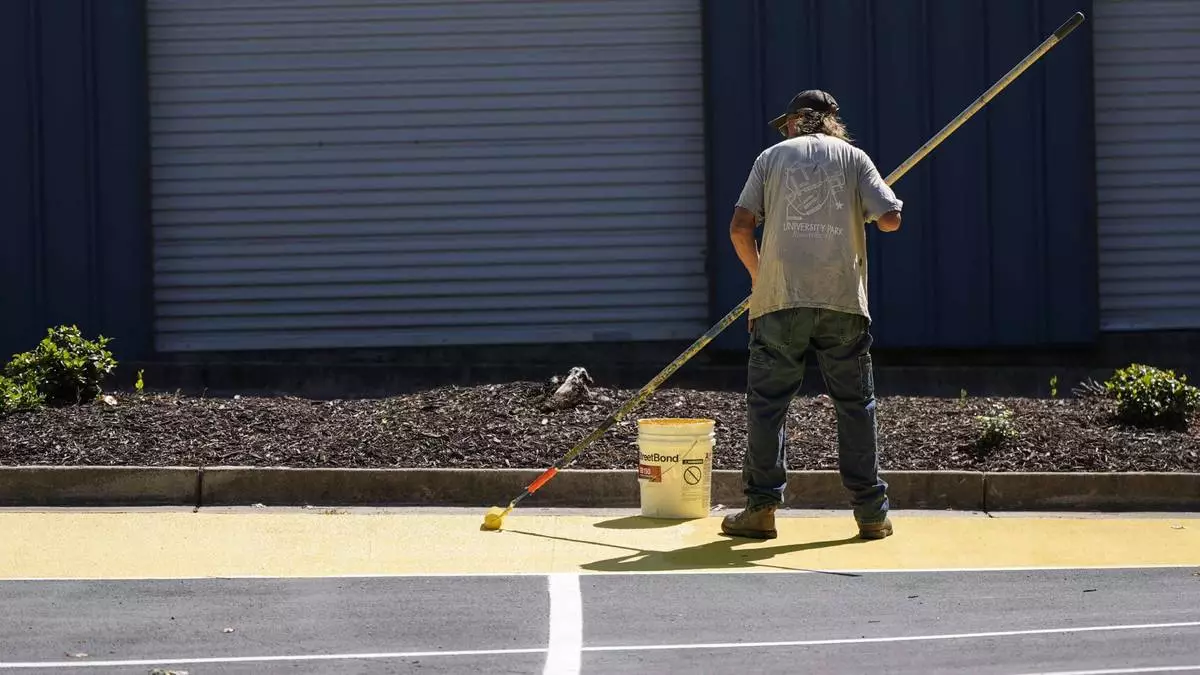
Ronnie Jefferies paints the parking lot at Science, Arts and Entrepreneurship School to help cool it by making it more reflective, Wednesday, Sept. 4, 2024, in Mableton, Ga. (AP Photo/Mike Stewart)
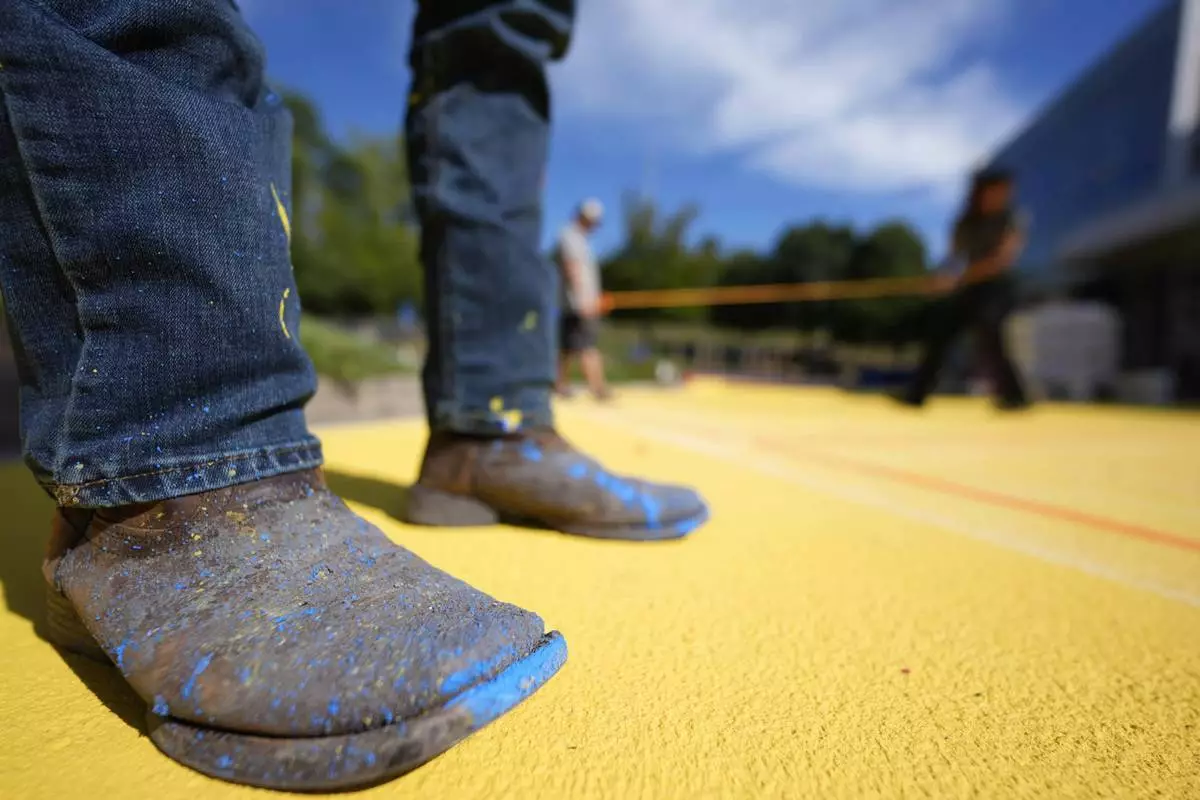
Ronnie Jefferies works on the parking lot at Science, Arts and Entrepreneurship School where it is being repainted to help cool it by making it more reflective, Wednesday, Sept. 4, 2024, in Mableton, Ga. (AP Photo/Mike Stewart)
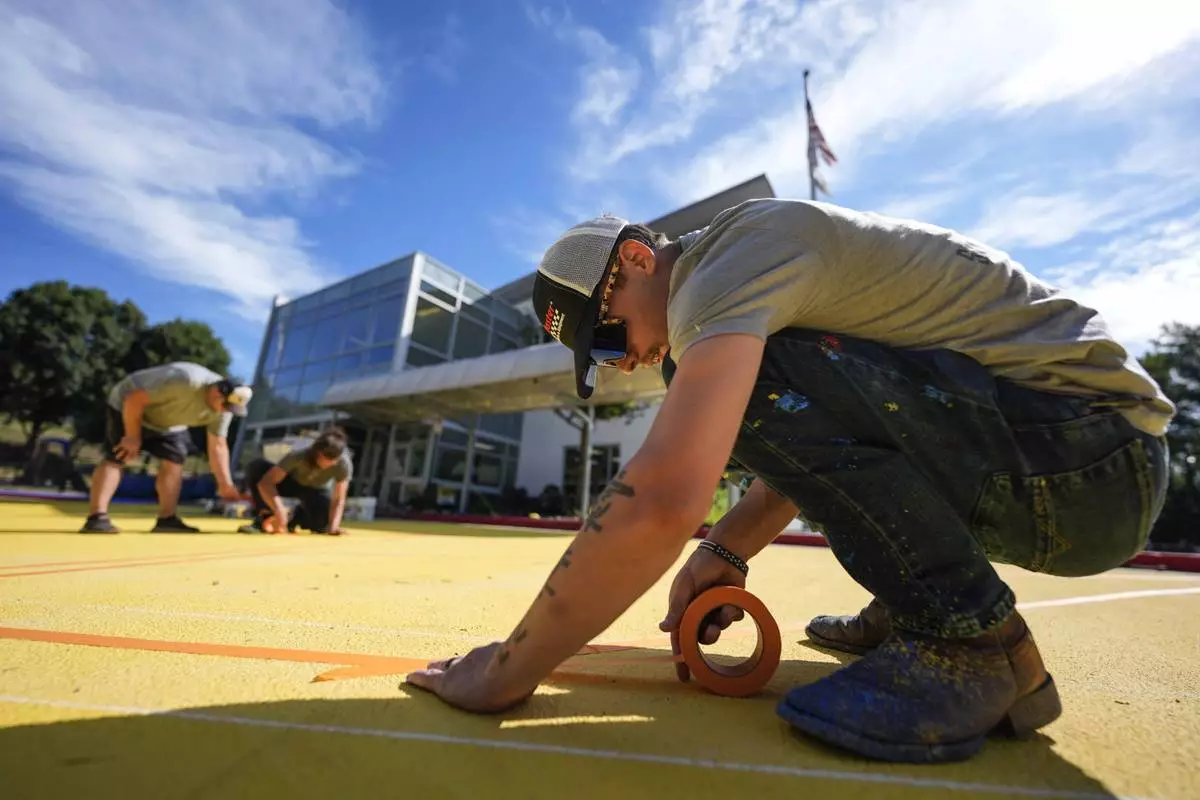
Ronnie Jefferies works on the parking lot at Science, Arts and Entrepreneurship School where it is being repainted to help cool it by making it more reflective, Wednesday, Sept. 4, 2024, in Mableton, Ga. (AP Photo/Mike Stewart)
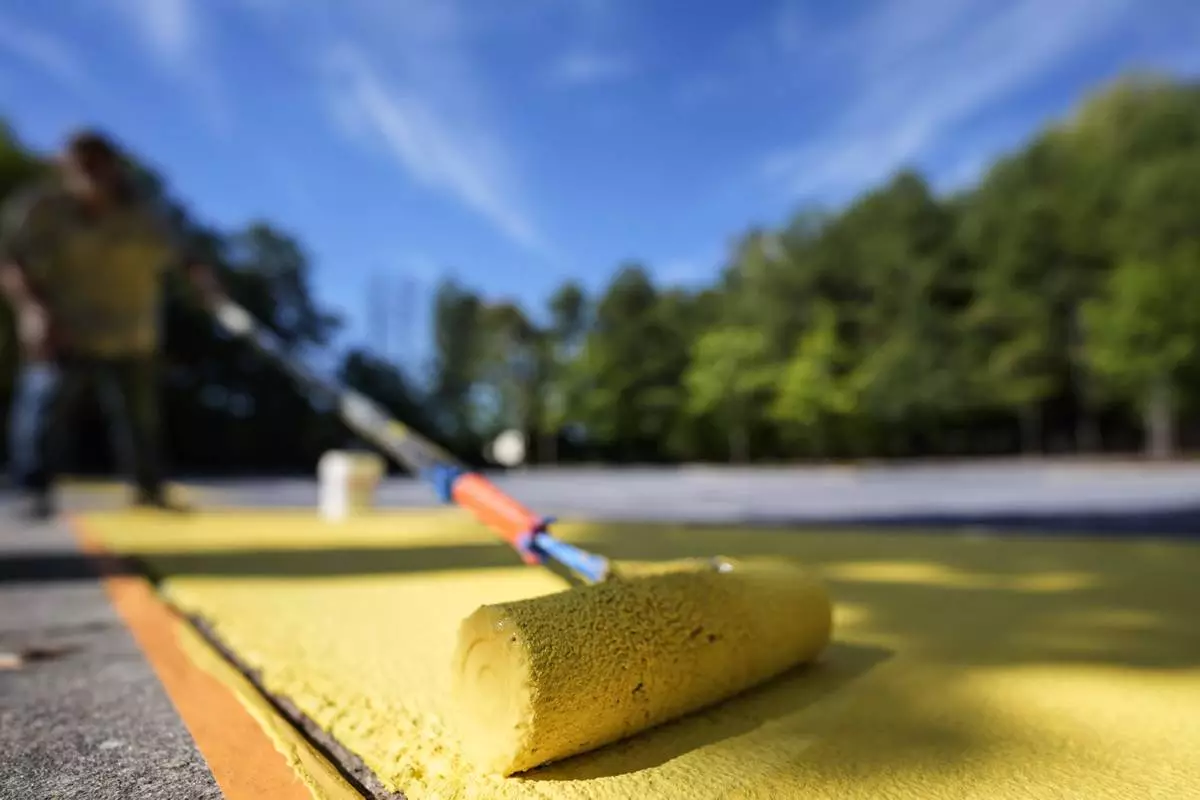
Ronnie Jefferies paints the parking lot at Science, Arts and Entrepreneurship School to help cool it by making it more reflective, Wednesday, Sept. 4, 2024, in Mableton, Ga. (AP Photo/Mike Stewart)



